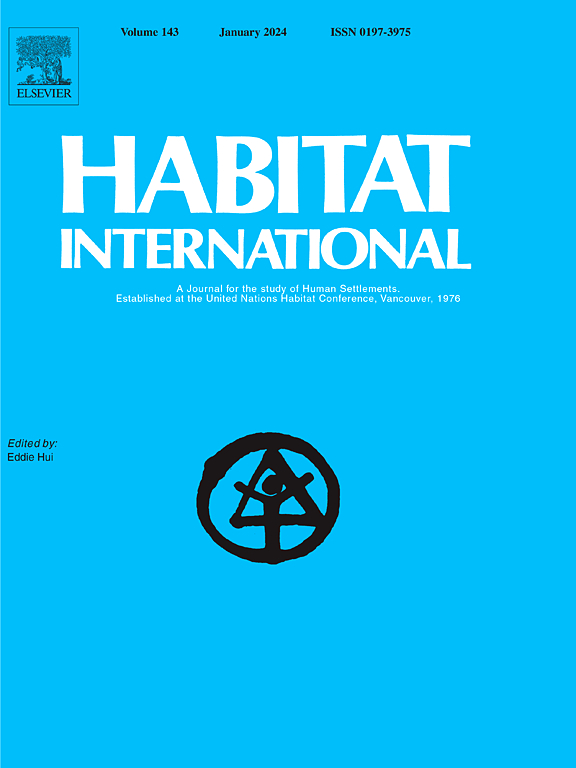Evaluating human-nature relationships at a grid scale in China, 2000–2020
IF 7
1区 经济学
Q1 DEVELOPMENT STUDIES
引用次数: 0
Abstract
Understanding the complex relationships between humans and nature is crucial for achieving global sustainability and enhancing human welfare. China, with its vast population, stark human-nature contradictions, and considerable regional disparities, currently lacks grid-scale research methodologies and practices. We utilized the Human Footprint (HF) and Ecosystem Quality Index (EQI) as proxies for human-nature interactions. Employing the Sen + MK trend test, we analyzed their spatiotemporal dynamics across China on a 1 km2 grid from 2000 to 2020. Using an improved four-quadrant diagram, we quantified human-nature relationships. Our findings reveal a trend toward greater coordination between humans and nature across China from 2000 to 2020, with areas of coordination outnumbering conflict zones by a factor of 2.4. Conflict predominantly occurred in the North China Plain and urban agglomerations. In most cities, the human-nature relationship exhibited a distinct concentric pattern: over 75% of old urban areas showed no significant change, while 80% of new urban areas experienced conflict. In nature reserves, human-nature relationships generally tended toward coordination, suggesting that conservation efforts have been largely effective. While increased human activity has generally supported ecosystem restoration and improvement at the national scale, rising HF in conflict areas has still significantly reduced the EQI. The implementation of government-led ecological projects in China has positively impacted human-nature relationships. However, urban land expansion remains a key factor contributing to human-nature conflicts. The methodology provides a valuable framework for assessing human-nature coordination across different scales and regions, facilitating dynamic regulation of ecological protection and grid-based management of the human settlement environment.
2000-2020年网格尺度下的中国人与自然关系评价
理解人与自然之间的复杂关系对于实现全球可持续发展和增进人类福祉至关重要。中国人口众多,人与自然矛盾突出,地区差异较大,目前缺乏网格尺度的研究方法和实践。我们利用人类足迹(HF)和生态系统质量指数(EQI)作为人类与自然相互作用的代理。采用Sen + MK趋势检验,分析了2000 - 2020年中国1 km2网格上植被的时空动态。使用改进的四象限图,我们量化了人与自然的关系。我们的研究结果显示,从2000年到2020年,中国人与自然之间的协调趋势日益增强,协调地区的数量是冲突地区的2.4倍。冲突主要发生在华北平原和城市群。在大多数城市中,人与自然的关系呈现出明显的同心式格局:超过75%的旧城区没有明显的变化,而80%的新城区出现冲突。在自然保护区,人与自然的关系通常倾向于协调,这表明保护工作在很大程度上是有效的。虽然人类活动的增加总体上支持了国家尺度的生态系统恢复和改善,但冲突地区HF的上升仍显著降低了EQI。中国政府主导的生态工程的实施对人与自然的关系产生了积极的影响。然而,城市土地扩张仍然是导致人与自然冲突的关键因素。该方法为评估不同尺度和区域的人与自然协调提供了一个有价值的框架,促进了生态保护的动态调节和人类住区环境的网格化管理。
本文章由计算机程序翻译,如有差异,请以英文原文为准。
求助全文
约1分钟内获得全文
求助全文
来源期刊

Habitat International
Multiple-
CiteScore
10.50
自引率
10.30%
发文量
151
审稿时长
38 days
期刊介绍:
Habitat International is dedicated to the study of urban and rural human settlements: their planning, design, production and management. Its main focus is on urbanisation in its broadest sense in the developing world. However, increasingly the interrelationships and linkages between cities and towns in the developing and developed worlds are becoming apparent and solutions to the problems that result are urgently required. The economic, social, technological and political systems of the world are intertwined and changes in one region almost always affect other regions.
 求助内容:
求助内容: 应助结果提醒方式:
应助结果提醒方式:


